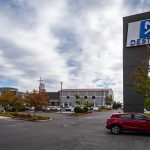Various Types of HVAC Systems for Commercial Buildings
Commercial buildings are huge, and they require huge HVAC systems to make the large space comfortable for people. Unlike home units that cool just one house, office buildings require powerful equipment that can handle up to hundreds of tons. That is why building owners need to carefully choose the right HVAC system for their building based on the size and the number of visitors every day. To choose the right HVAC system for your commercial property, you will need the help of professional HVAC installation services.
Segment of Cities We Serve for HVAC and Plumbing Services
Table of Contents
ToggleThe Working Of Commercial HVAC Systems
When you own a commercial property, you must accurately ventilate it and have a proper heating and cooling system to maintain a comfortable temperature. However, HVAC systems in commercial buildings are not as simple as those installed in residential buildings for the comfort of a few family members.
Commercial HVAC Systems require HVAC systems that can cool down large spaces. If you own a commercial building, you must have at least some knowledge about these complex HVAC technologies for emergencies.
The fundamental operation of an HVAC system is straightforward yet crucial to understand. It extracts heat from within a building and expells it outside, a process facilitated by a refrigeration cycle that uses refrigerants to absorb and release heat.
The key components of an HVAC system include chillers or compressors that generate cold air or water, pumps, pipes that transport the air or water, and air handlers that distribute the cooled air to the building’s occupants.
Top Types of HVAC Systemes for Commercial Properties
1.Chillers:
There are two main types of chiller systems: traditional condenser water systems and air-cooled/coiled chiller systems.
Traditional Condenser Water System
In a condenser water system, an electric centrifugal chiller uses refrigerants to absorb and reject heat into the condenser water. This water circulates in a loop to the cooling towers, where fans blow air across it to remove the absorbed heat. These systems require significant infrastructure, including chillers, pumps, pipes, air handlers, cooling towers, and water treatment systems. This extensive setup makes them efficient for cooling large spaces, typically found in bigger office buildings, but they are too complex and powerful for smaller spaces or buildings.
Air-Cooled Chiller Systems
Ever noticed how your car’s radiator works? Well, air-cooled chillers operate in a similar way. They use fans to blow outdoor air over coils filled with refrigerant. This process happens outside the building, helping to get rid of the heat.
What’s cool about this setup is that it doesn’t need all the extra stuff like condenser water, cooling towers, or water treatment that water-cooled systems do.
Sure, they may not be as effective in super hot or huge buildings, but for small to mid-sized offices, they’re cost-efficient. Since they don’t rely on water, maintenance is simpler and they use less energy compared to water-cooled systems.
So, if your building doesn’t need a ton of cooling power, air-cooled chillers could be the smart choice. They’re simple, cost-effective, and keep things cool without all the fuss.
Comfort on Demand
Book your HVAC Service Hassle-Free!!!
2.District Cooling
Some large commercial buildings buy chilled water from district cooling plants instead of installing their own chillers. This saves on initial costs for chillers, cooling towers, pumps, and pipes. Buildings link to the central district cooling plant via underground pipes. The plant uses electric centrifugal chillers and cooling towers to chill the water. Building owners pay the district utility company based on their chilled water usage.
3.VRV or VRF
Variable refrigerant flow (VRF) systems, also known as variable refrigerant volume (VRV) systems, are all-electric HVAC solutions. These systems use refrigerant to move heat from multiple indoor evaporator units to one or more outdoor condensing units, where the heat is expelled.
VRF systems are a top choice among commercial property owners because they offer a few advantages like –
- Flexibility
- Energy savings
- Lower maintenance costs compared to traditional central plant equipment
VRV (variable refrigerant volume) or VRF (variable refrigerant flow) systems, the epitome of HVAC technology, are highly regarded by mechanical engineers. These systems offer a host of benefits, including flexibility, efficiency, and the use of new refrigerants with low global warming potential.
These direct expansion systems replace the need for chillers and chilled water pumps by transferring heat via refrigerant lines from indoor units to outdoor compressors. Their variable capacity allows for independent cooling of different zones, improving efficiency.
VRV/VRF systems have lower operating costs than traditional HVAC systems without the need for water infrastructure. However, due to the technology’s newness, long-term maintenance costs are still uncertain. Their popularity has earned them the industry nickname “chiller killers.”
24/7 HVAC Support
Contact Us for Quick Fixes and Maintenance
4.RTU (Rooftop Units)
Rooftop units (RTUs) are self-contained HVAC systems designed for single floors or zones. With cooling capacities typically below 120 tons and the use of common refrigerants, RTUs are a reliable choice. They come equipped with their own evaporators, compressors, and condensers to produce and distribute cold air or water. These units, commonly found in low-rise commercial buildings like office towers, retail stores, and warehouses, offer easy installation and zone-by-zone climate control. With proper maintenance, RTUs typically last 15 to 20 years, making them a dependable and secure investment in your HVAC needs.
5.Direct Expansion
Direct expansion (DX) split systems are commonly found in homes. These systems link one or more indoor evaporator units to an outdoor condenser unit for each zone. They work by circulating refrigerant, which directly expands from gas to liquid and back, absorbing and releasing heat. DX systems look like large residential air conditioners and are best suited for small commercial buildings, not large complexes. If an outdoor condenser fails, the connected indoor units stop working, but other zones remain unaffected.
Looking to upgrade your commercial HVAC system? Contact Heald Mechanical today!
Do you want to ensure your business property’s heating and cooling system always works best? Well, you just got lucky because Heald Mechanical is here to provide the best HVAC installation and repair services in Sacramento, and it is designed just for you. Don’t settle for anything but the best, and contact Heald Mechanical today to schedule your HVAC services!











